Hi Chris, these are mine. I think it's striking that one can find these models with and without tilt and occasionally with civilian driver. Nevertheless it was only ever advertised (pictured) without tilt and without driver (which might make a difference in price).
I especially like my brick red one.
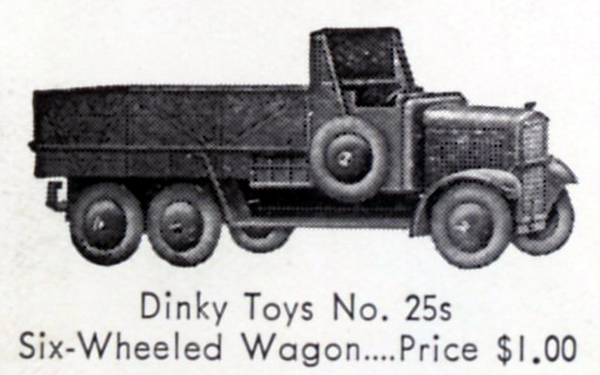
And there are of course the basic military versions:
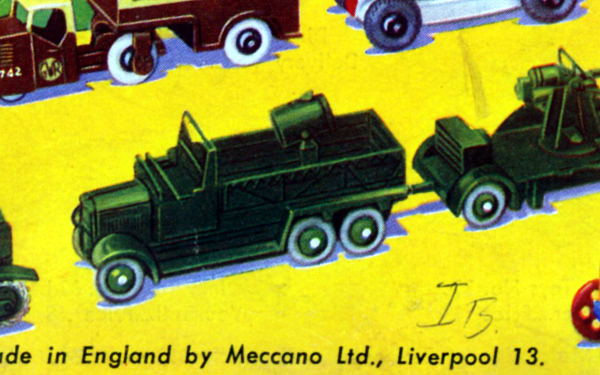
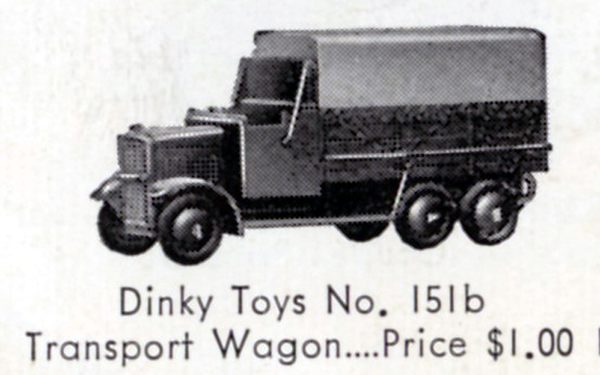
Still some colours to go for you and for me!
Regards, Jan
Can anyone of you, gentlemen, give me some information about the prototype of
this very interesting Dinky?
The prototype (below) is a 1929 Karrier WO6 6x4 Dorman 4cylinder petrol side valve lorry, registration MT 6287, serial No. 50711, restored in 1992, It seems that it is the only remaining one.

Kind regards, Jan
All these years I thought it was a Leyland! See you learn something every day. Interesting about the tilts, as until I tried to swop them I didn't realise the tilt on this is shorter than the standard Austin or 25 Series lorry tilt, so they must have been made for this model alone.
Chris Warr.
I do not think that Meccano modelled any particular truck, but took features from more than one manufacturer.
The Karrier above has a rounded radiator, where the Dinky has a square one. As far as I am aware it resembled the Leyland Terrier 6x4 3 ton, prior version of the later Retriever 6x4. Incidently some of the Terriers went to France with the BEF, and at least one saw further service with the Wehrmacht. The above Karrier saw service in 1926. If you study the pictures in "The Observer's Army Vehicles Directory to 1940", the Leyland is the only truck to have the square engine covers as the Dinky. The Thornycroft, Karrier & Guy all have rounded engine covers. So I think it is a bit of designer's imagination in the trucks appearance. In other words it resembles the Karrier & Leyland but not exactly. After all it was produced as a toy back then.
There was a discussion in 2011 in the DTCA Journal regarding the origins of the Dinky 6-wheel vehicle, this was between DTCA member Malcolm Hay and Brian Baxter of the REME museum. See below:
Dear David
Regarding your question about the identity of the 151b 6-wheeled Covered Wagon I was drawn to the Crossley IGL having googled “Crossley Military Vehicles†and seen the picture of a RAF GS Truck with a spare wheel mounted on the cab by the passenger’s door, though a “hard top†and it having a similar bonnet but by no means an exact copy!
I have asked this identity question to Brian Baxter a senior curator at the REME Museum in Arborfield and have enclosed his answer.
All the best Malcolm Hay (202)
Dear Malcolm,
The prototype of the 3 ton six wheeled Dinky has always been a subject of discussion. At the time these three tonners first appeared in the very late 1920s there were several bonneted versions including the Leyland Terrier, the Crossley IGL, a Karrier and a Thornycroft A3 and later, A5. The general consensus was that Dinky produced a generic version based on the standard layout. It certainly does not have an identifiable Leyland nor Crossley radiator grille. The forward control versions of the real vehicles followed in the early 1930s. These included all the former makes plus an Albion and an AEC.
I am afraid that this is not a definitive answer but I don’t think anyone has ever been able to prove which of the contemporary 3 tonners inspired the model. At the time it was first introduced one might have expected them to go for a forward control variant but there may have been an idea that a bonneted version looked more military.
Reverting to 3 ton 6x4 various there was one version of, we think a Crossley IGL 7, used as a crash tender in India in the 1930s. It was basically the forward control truck with a variety of gubbins on the flat bed but we have not yet found any official refs to it and only a couple of photos possibly of different vehicles. One was in a bit of a knocked about state having had a building fall on it during the Quetta earthquake in 1935. The other view is one on an airfield at Miramshah in the North West frontier region of what was then still India. That photo was dated two or three years later. I have asked contacts at the RAF Museum at Hendon to do some digging for me but, generally, if it does not fly they do not want to know! The vehicle does not appear in the wartime RAF fire manual produced by the Air Ministry so we assume it was a local special and not used outside India or possibly that they had all been superseded by the time the manual was produced. The other general assumption is that the reason for its production was a shortage of the standard types of crash tender of the period which included three other Crossleys, a 4x2 and two different bonneted 6x4s and the Morris Commercial 30cwt 6x4. The Crossley 4x4 appeared too by 1939, probably the first of the 3 ton 4x4s to appear in military service and well before the Bedford QL. If you ever discover any photos or data on the Crossley IGL crash tender in India I would be very grateful for details.
All the best, Brian Baxter, Senior Curator, REME Museum, Arborfield, Berks
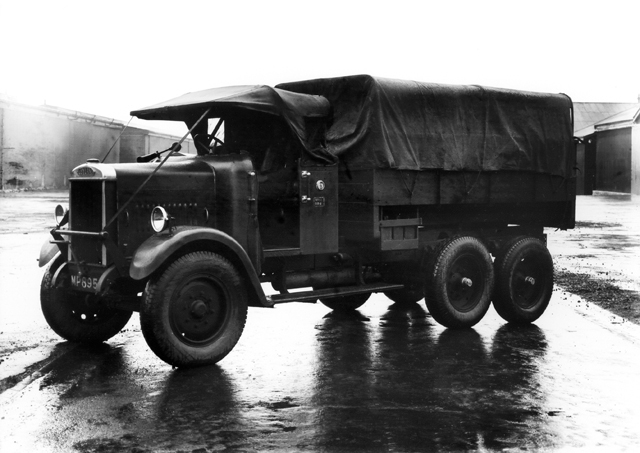
Above is a photo of the Leyland Terrier as can be seen the Dinky seems to be a cross between the Crossley and the Leyland.
Dave
I've had all three volumes of the Observer's Army Vehicle guides since I was a lad in the early '70's : Army Vehicles to 1940, Fighting Vehicles of WW2, and Military Vehicles from 1945, they are wonderful, and I have spent many hours with them over the last 40 years.
Chris Warr.
I also own all three and would thoroughly recommend them to anyone with an interest in Army vehicles.
Dave
Pictures below of the Six-Wheeled Wagon. Immediately post-war it had the perforations in the front seats, some (like this one) added with a fixed driver. The later examples have the holes filled in. The same pattern occurs for the military Transport Wagon, no. 151b. Still, there may be a mix of castings as - at closer look - I find some later examples with the perforations too and the late export Transport Wagon also has a fixed driver.
Two more observations regarding the 25s/151b/620 Six-Wheeled Wagon.
1. Only two issues seem to have had fixed drivers: the immediately post-war civilian version and the final US export 151b/670, the military version with post-1952 axle ends. Later post-war issues have no perforated seats, with the exception of the later US export version. Can anyone advice if the single perforation for that military driver was another casting change or was it simply drilled for this occasion?
2. As soon as the axle width increased of the first post-war castings, the axle supports increased in size as well, in order not to weaken the supports by the larger holes for those axles, but not immediately, as two early post-war examples (with thick axles and smooth hubs) illustrate.
I recently acquired a fairly rough example of the 25s. At least, I think it's a 25s. It's pre-war with smooth wheels and thin axles but I'm still a little confused about the difference between 25s and 151b. The reason that I settled for a poor example was that it's cast from lead alloy and it's the first such example of a Dinky that I own.
Were the lead alloy models fairly common or should I resist trying a restoration in order to maintain originality?
Hello,
The pre war lead sixwheeled wagons are quite rare so I would keep it in original unrestored condition. A repaint only has sence when the model is overpainted. Please send a color picture and we can tell you if you have a civil or military wagon.
John.
Thanks John45. I'll upload a photo when I can. It looks military to me as it has holes for two in the cab and ten in the back. It has what appear to be four of the original tyres on the back axles and one on the spare. The pair on the front don't match those on the rear as they have a tread pattern but are of some age as one has acquired a stylish flat bottom in common with the rear four. The spare looks like something painted by Salvador Dali as it hangs in an elongated loop off the driver's cab side.
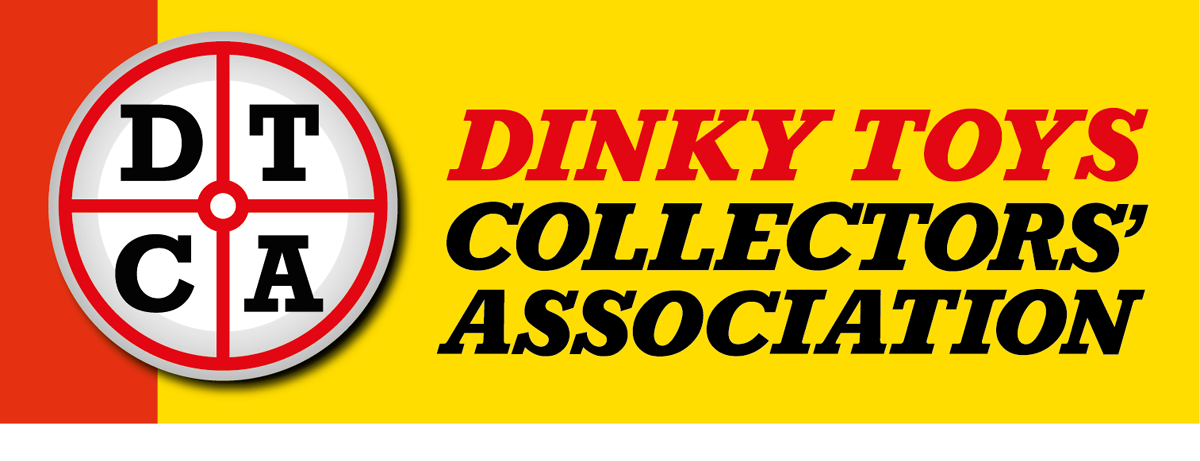

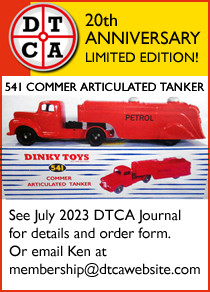
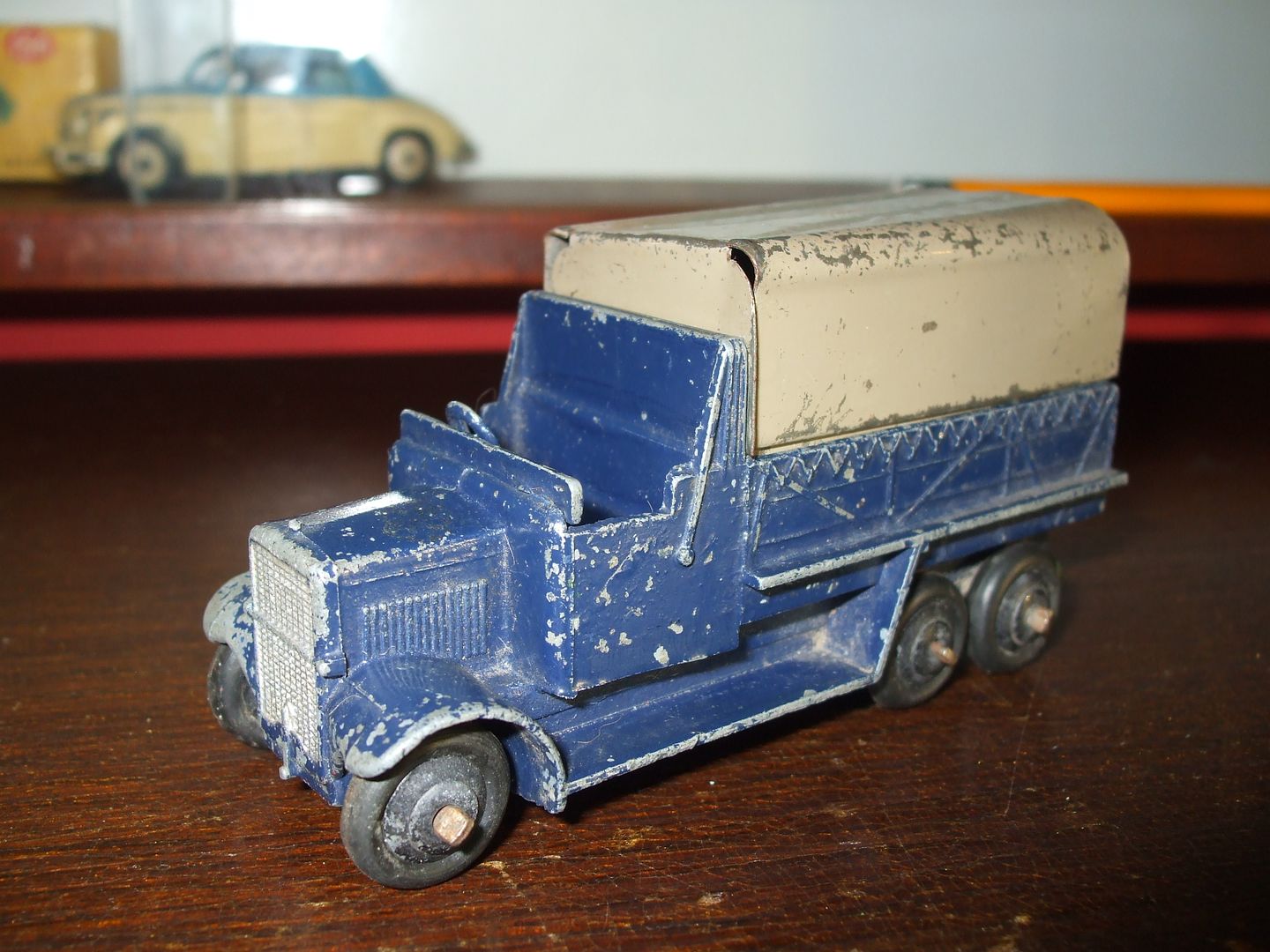
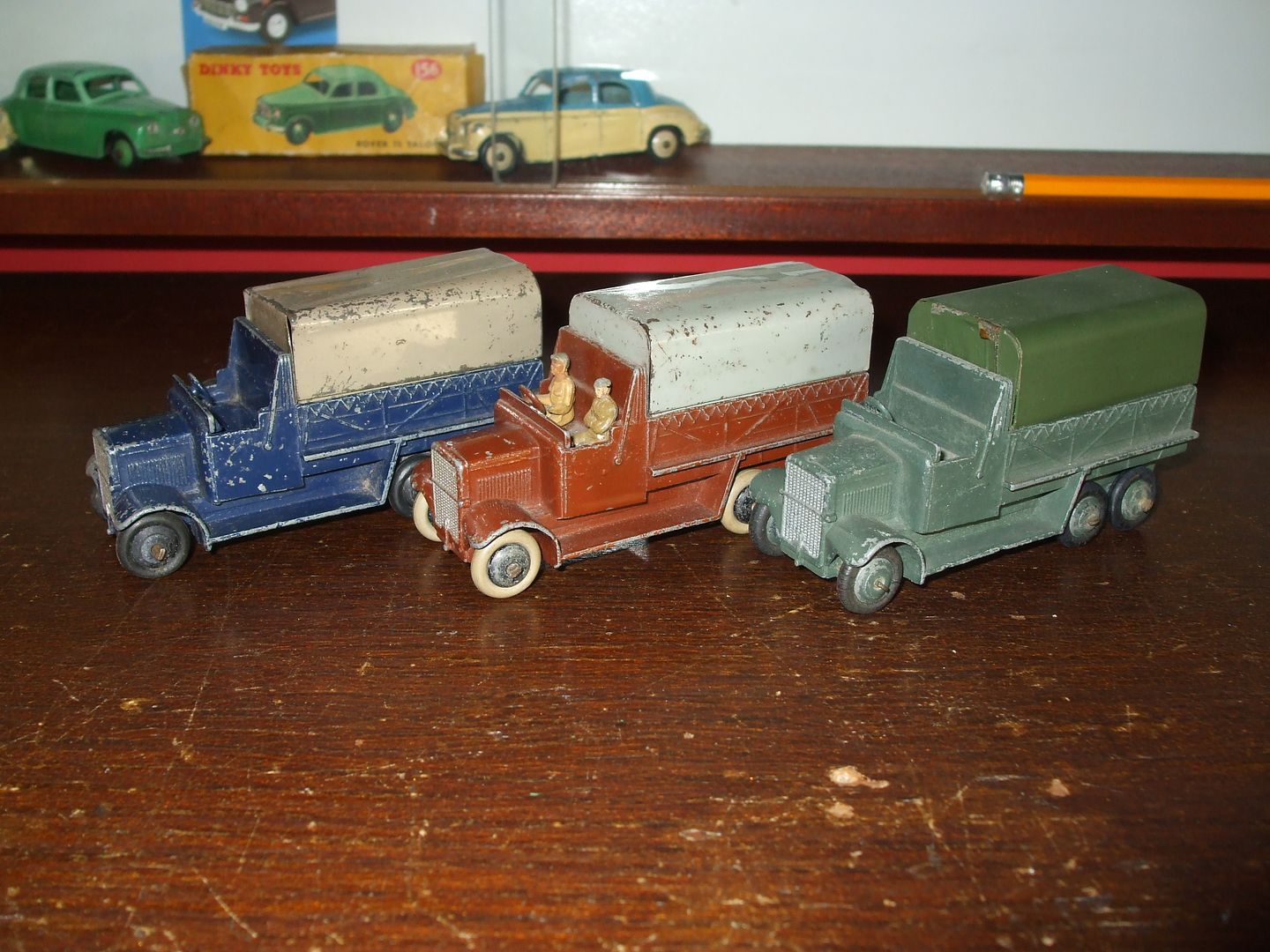
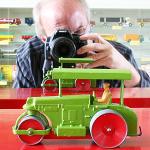

-073 Land Rover, Horse Box and Horse (1960-67)
DTCAwebsite upgrade 2023
DTCAwebsite upgrade 2023
-105c and 383 4-Wheel Hand Truck (1949-1958)
-105c and 383 4-Wheel Hand Truck (1949-1958)
DTCAwebsite upgrade 2023
DTCAwebsite upgrade 2023
DTCAwebsite upgrade 2023
DTCAwebsite upgrade 2023
DTCAwebsite upgrade 2023
DTCAwebsite upgrade 2023
DTCAwebsite upgrade 2023
DTCAwebsite upgrade 2023
DTCAwebsite upgrade 2023
DTCAwebsite upgrade 2023
DTCAwebsite upgrade 2023
DTCAwebsite upgrade 2023
DTCAwebsite upgrade 2023
--22c Motor Truck (1933-50)
--22c Motor Truck (1933-50)
DTCAwebsite upgrade 2023
DTCAwebsite upgrade 2023
Trailer Caravans
Trailer Caravans
DTCAwebsite upgrade 2023
DTCAwebsite upgrade 2023
DTCAwebsite upgrade 2023
DTCAwebsite upgrade 2023
Trailer Caravans
Trailer Caravans
-138 Hillman Imp (1963-73)
-537 Renault 16 TL
-189 Triumph Herald Saloon (1959-64)
-255 Mersey Tunnel Police Van (1955-61)
DTCAwebsite upgrade 2023